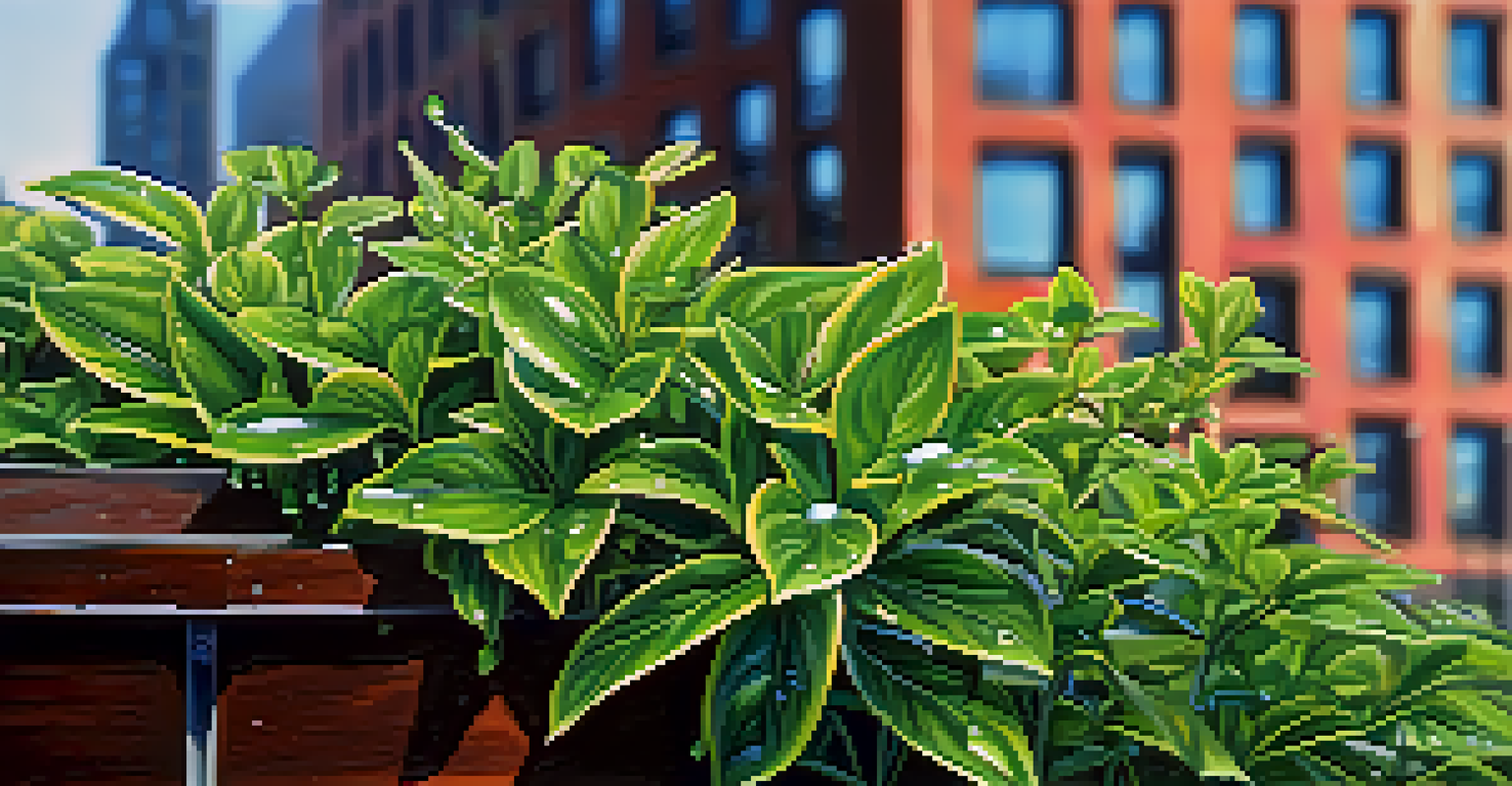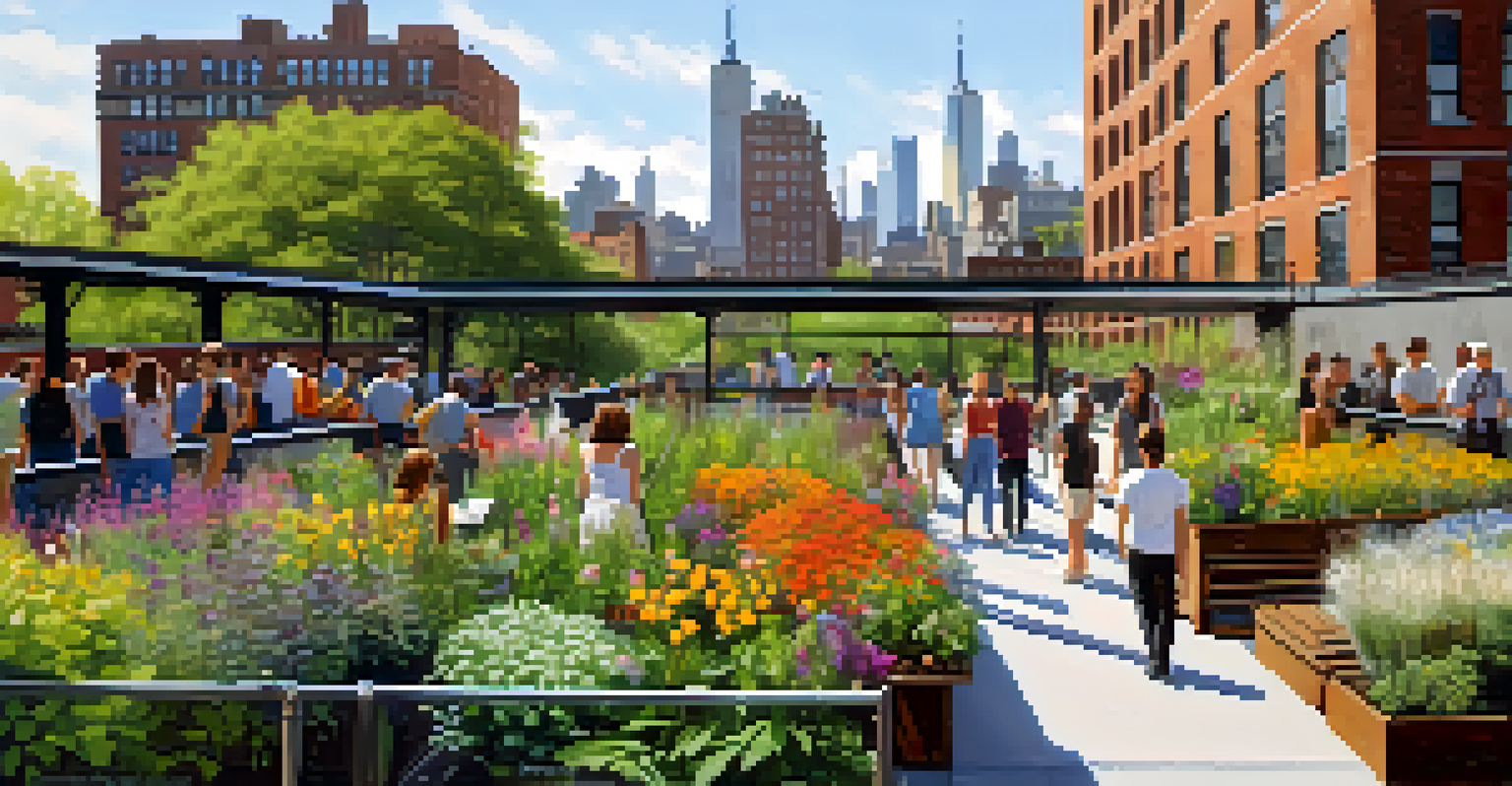The Futuristic Design of the High Line: An Urban Oasis

An Introduction to the High Line: A New York Landmark
The High Line is not just a park; it’s a symbol of urban renewal. Built on a historic freight rail line in Manhattan, this elevated park offers a unique blend of nature and design. Opened in 2009, it has transformed a neglected space into a vibrant urban oasis that attracts millions each year.
The best way to predict the future is to create it.
Visitors are greeted by lush greenery, art installations, and stunning views of the city. The High Line stretches nearly 1.5 miles, providing a scenic path for walking, lounging, and taking in the sights. It’s a testament to what can happen when creativity meets community needs.
By repurposing an old railway, the High Line has sparked a broader movement in urban design. This innovative approach to public spaces encourages cities worldwide to rethink how they utilize existing structures and landscapes.
Futuristic Architectural Elements of the High Line
One of the standout features of the High Line is its futuristic architecture, blending seamlessly with the natural environment. The design incorporates sleek, modern materials like steel and glass, complementing the organic elements of the plants and trees. This harmony creates a visually stunning experience as visitors stroll along the pathways.

The raised structure elevates visitors above the street level, offering a unique perspective of the surrounding architecture and skyline. With its undulating pathways and carefully curated gardens, every turn presents a new surprise, making it an adventure in urban exploration.
The High Line: A Symbol of Renewal
Transforming a historic freight rail line into a vibrant urban park, the High Line exemplifies successful urban renewal and community engagement.
Moreover, the design promotes sustainability, featuring native plant species that require less maintenance and water. This thoughtful planning not only beautifies the area but also contributes to the ecological health of the city.
Art and Culture: The Heart of the High Line
Art plays a pivotal role in the experience of the High Line, with numerous installations and performances enriching the visitor experience. Local artists are showcased throughout the park, providing a platform for creativity in an urban setting. This fusion of art and nature invites guests to engage with the space on a deeper level.
Nature does not hurry, yet everything is accomplished.
The High Line also hosts various cultural events, including performances and art exhibitions, making it a lively hub of activity. This dynamic programming attracts diverse audiences, fostering a sense of community and collaboration among New Yorkers and visitors alike.
By integrating art into its framework, the High Line challenges traditional boundaries of public spaces. It encourages visitors to see urban environments as canvases for creativity, inspiring similar initiatives in other cities.
The Role of Green Spaces in Urban Design
The High Line highlights the importance of green spaces in urban planning, promoting mental well-being and community cohesion. In a bustling metropolis like New York City, having access to greenery can be a breath of fresh air, quite literally. Studies show that spending time in green spaces can reduce stress and enhance overall happiness.
Additionally, the High Line serves as a habitat for various wildlife, attracting birds, butterflies, and other creatures. This biodiversity contributes to the ecological balance within the city and educates visitors about the importance of preserving nature.
Integrating Art and Nature
The High Line beautifully merges artistic installations with natural landscapes, enriching the visitor experience and fostering creativity in urban spaces.
The park’s design encourages social interaction, with plenty of seating areas and gathering spaces. These features foster informal meetings and conversations, making it a thriving social hub amidst the urban landscape.
Community Engagement and the High Line
Community engagement was at the forefront of the High Line’s design and development. From its inception, local residents were involved in discussions about what the park should look like and how it would serve their needs. This participatory approach ensured that the High Line would reflect the community's desires and enhance their quality of life.
The Friends of the High Line, a nonprofit organization, plays a crucial role in maintaining and programming the park. Their ongoing efforts to involve the community in decision-making processes strengthen the bond between the park and the people who use it.
Through workshops, volunteer days, and educational programs, the High Line continues to nurture a sense of ownership among locals. This commitment to community engagement is a model for other urban projects looking to foster collaboration and inclusivity.
Challenges and Critiques of the High Line
Despite its success, the High Line has faced challenges and critiques since its opening. Some argue that the park has contributed to gentrification in surrounding neighborhoods, driving up property values and displacing long-time residents. This tension raises important questions about the balance between urban development and community preservation.
Additionally, the influx of tourists can sometimes overwhelm the park, leading to congestion and diminished experiences for local visitors. Finding a way to manage crowds while maintaining the park’s welcoming atmosphere is an ongoing challenge for its caretakers.
Challenges of Urban Development
Despite its popularity, the High Line faces challenges such as gentrification and overcrowding, highlighting the complexities of urban design.
These critiques serve as important reminders of the complexities involved in urban design. As cities evolve, it’s crucial to navigate these challenges thoughtfully to ensure that public spaces benefit everyone.
A Model for Future Urban Spaces
The High Line stands as a beacon for future urban design projects worldwide. Its innovative combination of nature, art, and community engagement sets a precedent for how cities can repurpose existing infrastructures. This model demonstrates that urban spaces can be both functional and enjoyable, enhancing the lives of those who inhabit them.
Many cities are now looking to the High Line as inspiration for similar projects, aiming to create green corridors that connect neighborhoods and foster community. This trend highlights a growing recognition of the importance of integrating nature into urban environments.

As urban areas continue to grow and evolve, the lessons learned from the High Line will be invaluable. By prioritizing sustainability, inclusivity, and creativity, future urban spaces can thrive as vibrant oases amidst the hustle and bustle of city life.